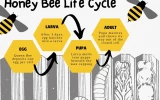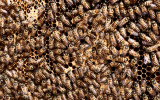Worker Bees Do Many Surprising Jobs You Didn't Think Of
Bees, being eusocial insects, are arranged in a hierarchy depending on their role in their community; there is the queen bee, male drones, worker bees, and the brood. The phrase “busy bee,” however, might be most applicable to worker bees, as can be seen by their foraging activity when they visit thousands of flowers each day. But did you know that worker bees do many surprising jobs we haven’t thought of?
The long list of jobs done by worker bees includes nursing, attending to the queen, cleaning the hive, cleaning other bees, undertaker duties, building and capping honeycombs, packing pollen, ripening nectar, repairing the hive, collecting nectar, pollen, propolis, and water, guarding the hive, and scouting a new hive.
Although worker bees live for only a few weeks, their entire lives are spent working every day to get the hive to function. If you’re curious how worker bees divide their numbered days to execute all the above tasks, keep reading to find out.
Summary
- Worker bees do a number of jobs to keep the hive functioning.
- All worker bees are female bees.
- Worker bees are capable of producing eggs, but their reproductive ability is suppressed by the queen's pheromone.
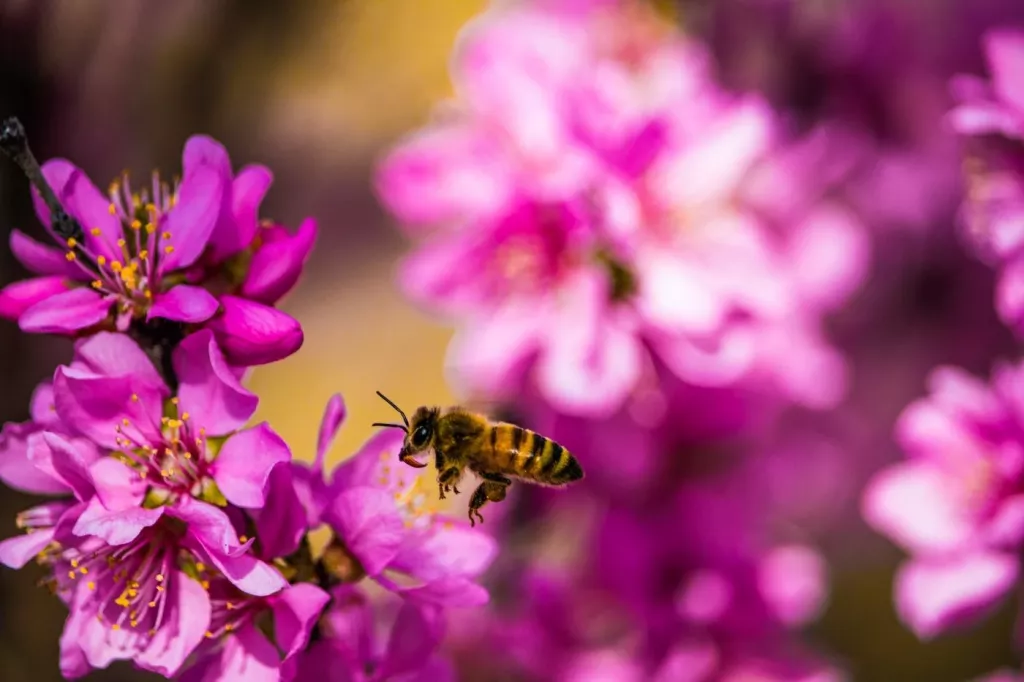
On this page:
Suprising Jobs of Worker Bees
Surprisingly, worker bees have so many jobs because their role changes every time they age, in sync with the development and diminishing of various glands and hormones.
The table below shows worker bees' jobs and job descriptions, and what age the onset of each is.
| JOB | DESCRIPTION | APPROX. AGE (DAYS) |
|---|---|---|
| Cell Preparation | Once they hatch, worker bees start cleaning the cells in the brood nest, starting from the cell where she emerged from | Day 2 – 16 |
| Capping brood | Young bees can secrete small amounts of wax. Combining new wax with existing brood comb, they can cap brood | Day 3- 10 |
| Nursing the larvae | Worker bees are also nurse bees. They nurse the larvae laid by the queen. When they just emerged, they will only feed older larvae with pollen and honey. When their hypopharyngeal glands develop, they can start secreting royal jelly, to be fed to the newer larvae and the queens. | Day 3- 15 |
| Attending to the queen | Young workers tend to the queen. They feed and groom the queen and remove her waste. They also pick up her hormones as they encounter her, which they transmit to other bees. | Day 3 – 14 |
| Receiving, ripening & depositing nectar | Foragers with collected nectar pass the nectar to worker bees called “house bees”. The house bees will break down nectar in their honey stomachs to reduce their water content, to make honey. When the desired consistency is achieved, they will now store the honey in the wax cells, produce wax caps, and seal them tightly. | Day 10 - 20 |
| Cleaning the hive and undertaker duties | Worker bees remove wax debris and trash in the hive, as well as dead bees that died within the hive, and take them far away from the hive. This activity helps reduce pest and disease problems. | Day 11 - 15 |
| Pollen Packing | Foragers also collect pollen as they visit flowers. This pollen is deposited directly into the cells, where the worker bees will mix it with nectar to create “bee bread”. Bee bread is the food source of worker bees and larvae. | Day 10 - 19 |
| Comb building | Wax glands of worker bees will be fully developed at this time, so they can start producing wax to build combs. This is also the best time for them to build or repair the comb and start sealing honey in wax cells. | Day 12 - 23 |
| Ventilating the nest | Worker bees fan their hive with the help of their wings to keep the hive cool. It is their way of removing carbon dioxide build-up, and evaporating water and honey as well. | Day 2 - 25 |
| Guarding the hive | Guard worker bees keep an eye on the hive entrance to defend against invaders. They make sure all returning field bees are well-inspected before entering the hive. | Day 15 - 28 |
| Foraging | The final role most worker bees take on is to be foragers. Foraging bees collect water, pollen, nectar, and propolis which they use as glue in their hive. Foraging is the most dangerous role for worker bees, in which most of their lives are at an expense. It’s also the most tiring role they take, as they carry heavy loads of pollen and nectar back to the hive each day. | Day 18 - 28 |
| Scouting new homes | Scout bees are worker bees trying to find a new home for the colony after the queen takes half of the original colony with her during swarming. They will inspect possible sites to build a new nest. | Day 22 - 42 |
Worker Bees Are all Female But They Don’t Reproduce
The hive is highly dependent on an all-girl power. This is because all worker bees are female bees. The drones, as we call it, are the males which are only responsible for mating, and the queen, of course, functions only to lay eggs and spread her pheromone.
The hive won’t function without these hardworking female bees, and their workforce doesn’t just help the hive itself but the whole world, through the process of pollination.
However, even though they are females and have functional ovaries to reproduce, research shows compounds present in queen mandibular pheromone (QMP) suppress ovary activation in ordinary worker bees, which renders them incapable of reproduction.
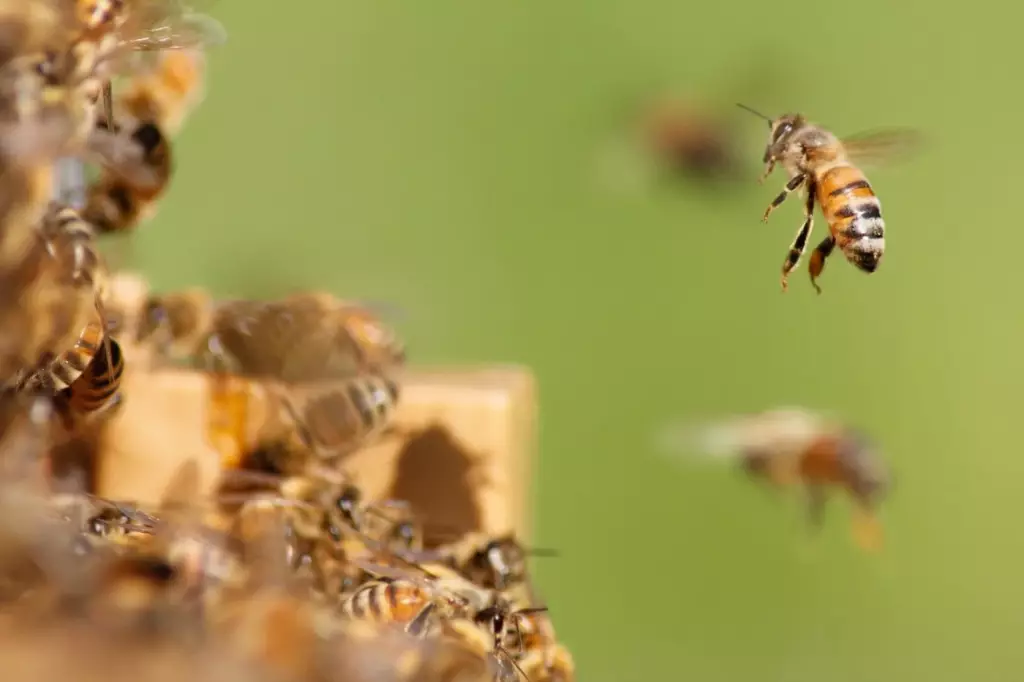
Can Worker Bees Lay Eggs?
Worker bees have various tasks in the hive, except that they don’t lay eggs. As mentioned, only the queen bee will lay eggs, and to ensure so, they suppress the ovary activity of worker bees with their pheromones.
However, worker bees are still capable of laying unfertilized eggs, and they can develop into male offspring or drones. But still, the queen must take control of the situation. The queen, to take dominance over reproduction, will eat any eggs laid by a worker bee. Some species of bees also exhibit “worker policing”, where worker bees will eat the eggs laid by fellow worker bees.
Workers that lay eggs can benefit so much from their assumed reproductive abilities. Individually speaking, it is thought to increase their lifespan three times longer, meaning their lifespan will be almost the same as the queen's. The longer lifespan is primarily because reproductive worker bees will not be assigned to carry out risky tasks such as foraging, which put the bees' lives on the line.
While it’s good for the bees themselves, this can pose many threats to the colony in general. An increase in workers who reproduce will jeopardize the colony and result in a queen-worker conflict.
How Long Do Worker Bees Live?
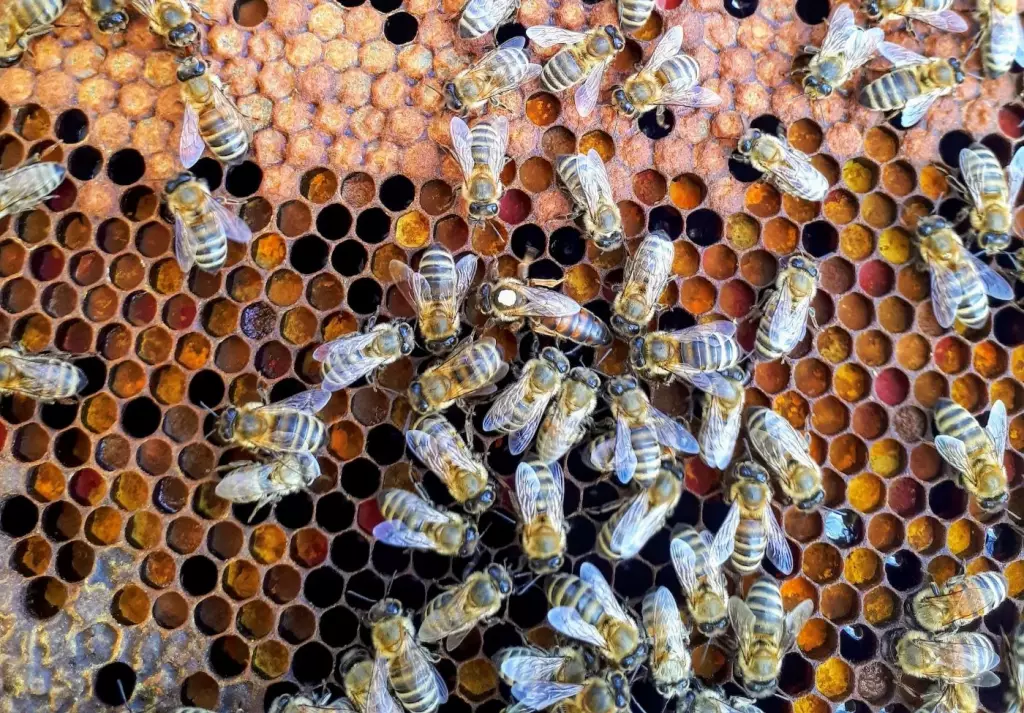
The lifespan of a worker bee spans from six to seven weeks during spring and summer, and four to six months during winter and autumn.
The reason why this varies is that during spring and summer, worker bees forage heavily, so their lifespan averages 15 to 38 days only. Some workers, however, may live up to 60 days. As mentioned above, foraging plays a huge factor in worker bees’ lifespan, since it’s the most tiring job for them. It’s also the time when they can meet various forces outside the hive that may prey on them.
But without the stress of foraging, worker bees can live for as long as 150 – 200 days, up to 320 days. Worker bees born just before winter are lucky enough because they will not be performing the most hazardous tasks for bees, since it’s winter. However, once the season becomes fair again, they will be back in their foraging business.
